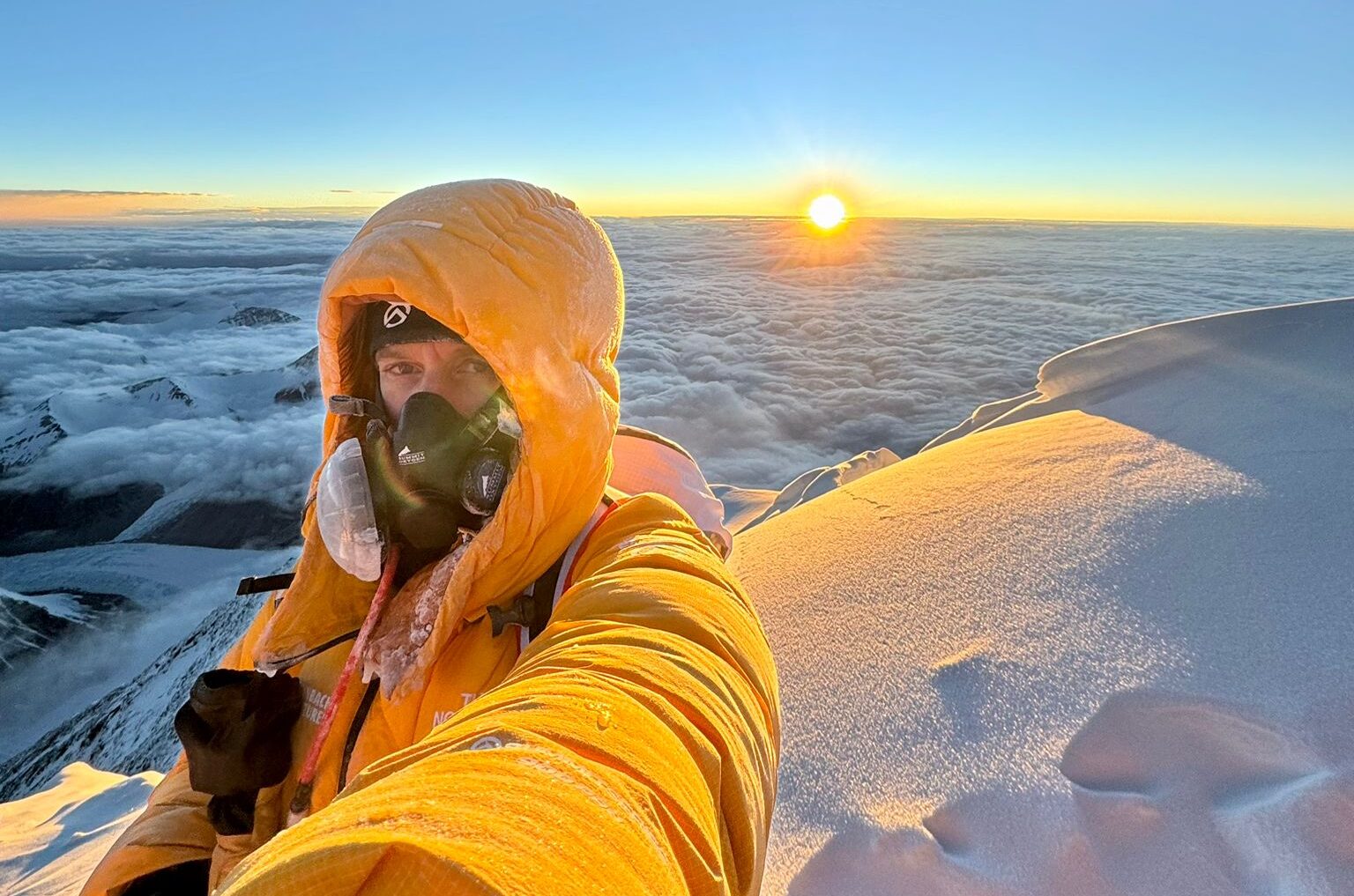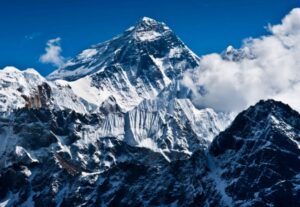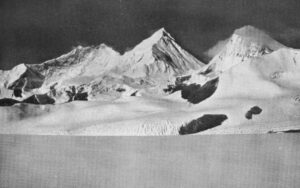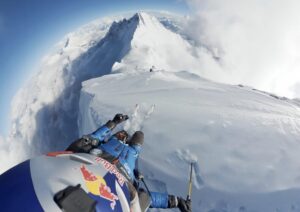Recent news of some British climbers intending to climb Everest in just one week made headlines around the world and caused a headache for the expedition outfitter organizing the climb.
Lukas Furtenbach of Austria is surprised at those who expressed safety concerns about the use of Xenon gas. The substance increases the climbers’ natural production of EPO before they travel to Base Camp and launch a single push to the 8,850m summit.
Furtenbach points out that his company, Furtenbach Adventures, has had a zero-accident record for more than 20 years.
“We are the only major Everest operator without any fatalities,” he says. “We have the highest safety standards and strictest safety protocols in this industry. Safety of climbers and staff is our No. 1 priority.”
Furtenbach says the negative feedback comes largely from “pre-judgment without knowing or ignoring facts…The loudest backlash came from our closest competitors.”
Keys to an Everest week
Yet the question remains: How can a guided team climb Everest in a single three-day push without previous rotations or acclimatizing on other mountains?
Furtenbach explained that Xenon therapy is only part of a more complex strategy developed over years of specializing in fast expeditions and hypoxic training for high-altitude climbers.
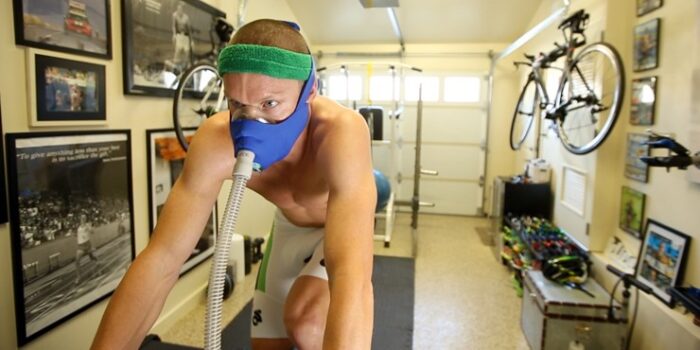
Hypoxic training is used in a wide range of endurance sports. Photo: Furtenbach Adventures
“We have worked with hypoxic systems since 2001, and we had the first successful ‘flash’ expeditions in Pakistan and China more than 15 years ago,” Furtenbach explained. “Then we started with flash expeditions on Everest in 2016, and they have all been successful.”
His company’s teams have already climbed Everest in 16 days, K2 in 21 days, Broad Peak in 14 days, Manaslu in 12 days, and Ama Dablam in 8 days. “In 2024, our Everest North Side team spent only 13 days in Tibet for the entire expedition,” he said.
“The key is that the acclimatization is individualized and that someone with experience has to monitor and develop the plan,” Furtenbach said. He noted that do-it-yourself pre-acclimatization or standard hypoxic protocols often fail.
Seven teams on Everest
This coming spring, Furtenbach Adventures will run seven different Everest teams on both sides of Everest. Only one will attempt the seven-day expedition. They will also be the first team to use Xenon as part of the acclimatization process. It also includes a customized hypoxic sleeping protocol and IHT (Intermittent Hypoxic Training).
No acclimatization will take place in the mountains. Once the training is complete, the climbers will be on standby to fly to Nepal when the route and camps on the mountain are ready and when the expedition leaders decide a suitable weather window is coming.
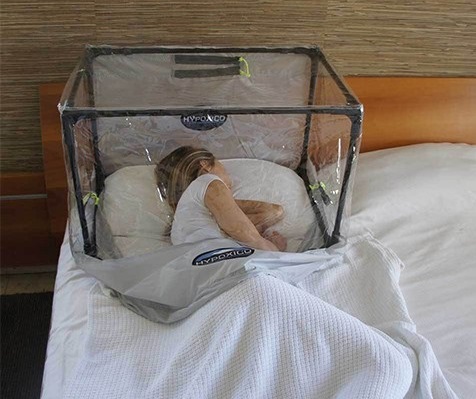
Mini-tent used for hypoxic sleeping protocols. Photo: Hypoxico
“The [Xenon] gas treatment is done for enhanced acclimatization, not for enhanced performance,” Furtenbach insists. “The gas treatment is neither illegal, nor doping, nor dangerous. It does the same thing that a hypoxic tent does, just quicker.”
Contrary to what the original article in the Financial Times stated, the treatment will not take place in Kathmandu.
Furtenbach says it is no different than showing up in Everest Base Camp after summiting another 8,000m peak.
“The only difference is that [our clients will] acclimatize exclusively in simulated altitude and not in real altitude,” he says. “But also, this is nothing new and was already done in the Italian-French Everest Comex study in the 1980s.”
Safety concerns
Some doctors expressed their concerns to ExplorersWeb, wondering whether it is safe to test the Xenon therapy on clients. One physician pointed to studies that showed the gas had little effect on athletic performance.
Yet Furtenbach and some of his guides told the Financial Times that they had experienced excellent acclimatization with xenon.
“I climbed a difficult route on Aconcagua eight days after leaving Innsbruck and had no problems on the summit,” he told the paper, adding that an oximeter showed he had higher blood oxygen levels than the local guides.
As for the study mentioned above, Furtenbach says that it was based on the performance of professional athletes, not its effects on high-altitude acclimatization.
“[The study actually] backs my statement that Xenon is not doping since the performance-enhancing effect is not clearly proven,” he noted.
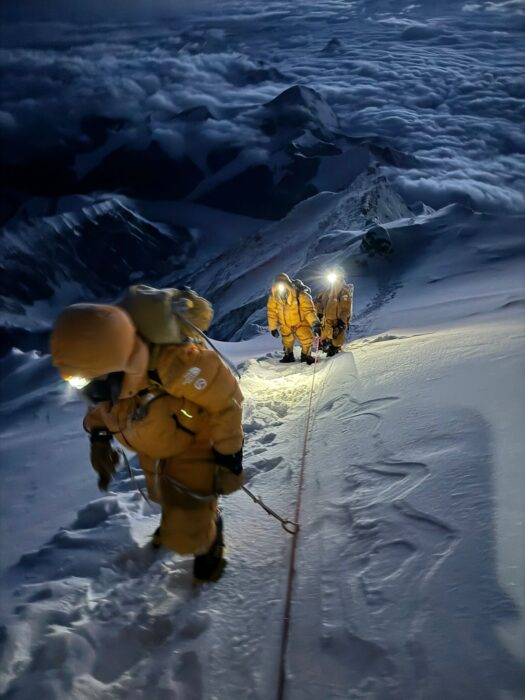
Climbers on Everest. Photo: Lukas Furtenbach
Nevertheless, Aconcagua is 6,910m. Everest is nearly 2,000 meters higher. Hypoxic training combined with Xenon won’t be enough by itself. Everyone will also use supplementary oxygen and Sherpa support. Furtenbach declines to give details of the flow rate and at what point on the mountain they begin to breathe bottled oxygen. They’ve taken years to develop their strategy and, reasonably enough, are not inclined to disclose their particular approach.
“I would never do anything that would involve an additional risk,” Furtenbach insists. “I see people dying on Everest every year. They die on traditional guided expeditions. They die in teams that are now raising safety concerns over our operation.”
The WADA ban
The use of Xenon gas is banned by the World Anti-Doping Agency (WADA). But Furtenbach says that many substances and drugs widely used in mountaineering are prohibited in organized sports.
“Commercial guided expeditions are not a competition, so this can’t be doping,” he says, adding that the substance is not used to enhance performance but to prevent altitude sickness.
“The FIS (International Ski Federation) lists oxygen as a prohibited substance for athletes, and WADA is discussing including it as well,” he said. “In Italy, hypoxic tents and all forms of hypoxic training were prohibited by the national WADA organization until 2024! Yet the ones who point their fingers at us are using hypoxic tents and oxygen — both prohibited by WADA — for their clients. We are having a highly hypocritical discussion.”
Furtenbach notes that they faced the same backlash when they started using hypoxic sleeping protocols, but now many expedition outfitters offer that approach.
Doping in mountaineering
“If we talk about doping in mountaineering, we need to start in the 20th century,” he says. “Hermann Buhl and his contemporaries used Pervitin (Methamphetamine) and other substances to enhance their performance during their first ascents of 8,000m peaks. We need to talk about the use of Diamox, Dexamethasone, cocaine, Ibuprofen, Paracetamol, NSAIDs, sleeping pills, codeine, asthma inhalers, Viagra, and many, many more drugs used in climbing today…And we are not even speaking about bottled oxygen.”

Oxygen canisters for use on Everest. Photo: IMG
Asked what separates cheating from mere support, Furtenbach is clear:
“Acclimatization in real altitude, acclimatization in simulated altitude (hypoxic tents) and acclimatization with Xenon gas are all tools. Tools to be able to survive in a hypoxic environment for a certain time…Bottled oxygen is also a tool to survive as long as necessary to reach the top and come down safely, without damaging your brain and other organs.”
“Helicopters to and from high camps, a Photoshopped summit picture, or a false summit claim when you stopped on a foresummit is cheating,” Furtenbach said.
“Chemical substances and drugs that enhance performance and can harm your health are doping. One example in mountaineering is Dexamethasone, another is Epoetin theta — synthetic EPO that is injected and has become famous for its use in cycling. Xenon is not [doping]. It is a natural gas and part of the air that we breathe.”
Pioneer spirit
Finally, Furtenbach points out that much of what we do today is different from how the pioneers did it. That doesn’t mean the spirit has been lost.
“Imagine an F1 race without safety tools like ABS or HALO on a modern F1 car. Is F1 still a race in the old-fashioned sense, even though the risk of dying is much lower than 50 years ago? Imagine ski touring without an avalanche beacon or an airbag…Imagine sport climbs without bolts. Science and technology improve safety. It is called progress.”
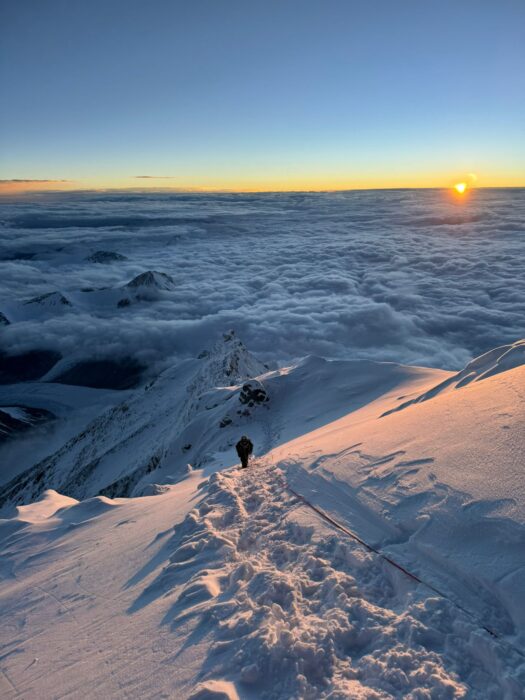
A climber on the North Side of Everest. Photo: Lukas Furtenbach
If people are against improving safety, they are also against science and against technology. Everyone is free to choose to spend months in an extreme and deadly environment. Reinhold Messner goes so far as to say that real alpinism [has to include] a chance of dying. If the spirit lies in the danger…then I obviously have a 100% different approach to expedition climbing. For me and my clients, dying is not an option. For me, dying is NOT part of the game when you climb mountains for the joy of it.
Everest will always be considered mountaineering, even if people don’t die pointlessly any more. Climbing a mountain is mountaineering, no matter what style. And let’s be clear: There is no one ethical style of climbing. The first British mountaineers in the 19th century went to the Alps with local guides and porters, ladders, medical enhancement, and much more. That was the beginning of mountaineering. The point is that everyone is free to choose his/her own style of climbing a mountain, as long as they don’t harm others with it.
